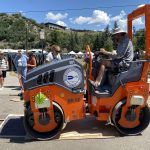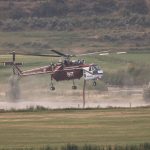‘A true gathering place’: Yampa River Botanic Park weaves nature, history and healing into heart of Steamboat
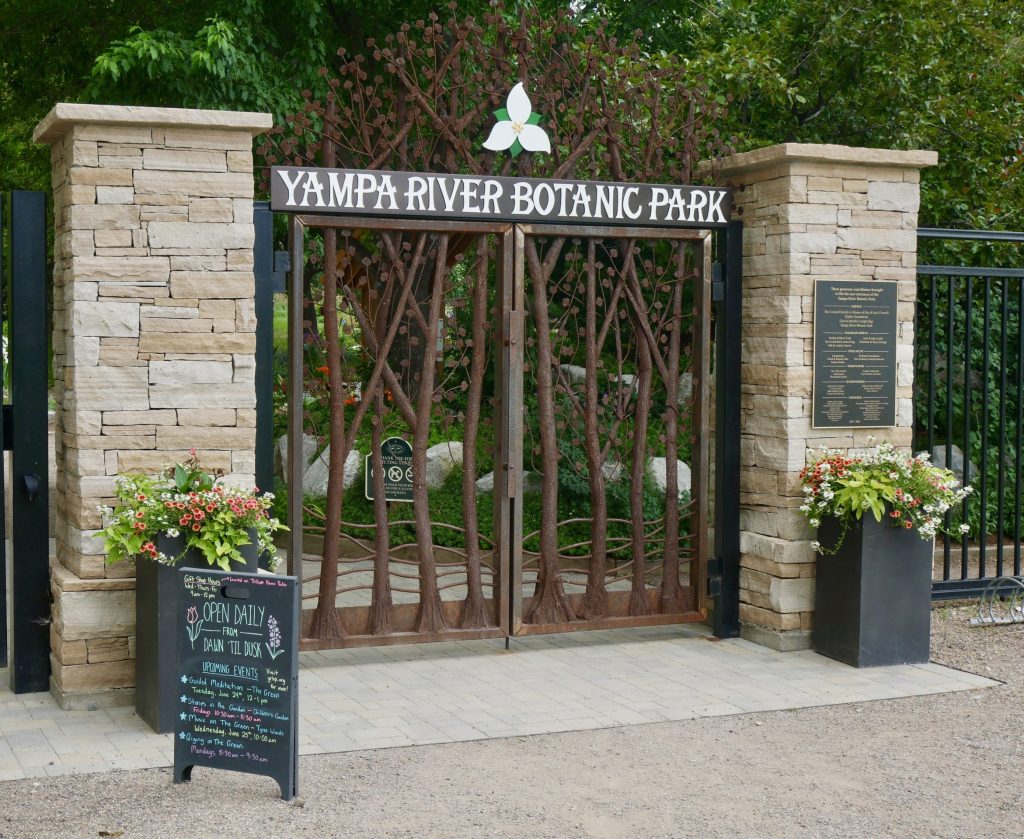
Nestled right next to U.S. Highway 40 and the Yampa River Core Trail, the Yampa River Botanic Park is one of Steamboat Springs’ quietest and most often overlooked treasures.
The park, which is free to the public and open from May through October, features more than 60 garden spaces, a tranquil pond system and a mission grounded in serenity and community connection. Since its founding in 1997, the park has grown from a peaceful vision in the minds of its founders into a botanical museum that draws residents, tourists and wildlife alike.
“I think it’s a true gathering place, and to me it’s like an outdoor community center,” said Executive Director Jennifer MacNeil. “We host programs and events with our partners, and I think this is an important place in the community for a lot of people.”
A vision rooted in generosity
The park was founded by longtime Steamboat residents Bob and Audrey Enever, who donated the land to the city and began shaping its quiet hills and berms with a tractor and a dream of green space
“This was just a flat horse pasture,” MacNeil said. “They trucked in 10,000 cubic tons of dirt. Bob in retirement actually built many of the berms with his tractor and a friend, C.D. Johnson.”
With an intentional design to buffer the sounds of the nearby highway and sports fields, the park’s landscape was created as a refuge from noise and distraction. Bob Enever also dug the ponds himself, which today are fed by a gravity-powered irrigation system pulling water from Fish Creek and returning it back to the Yampa River.
The Enevers were honored with the city’s Heritage Award in 2012 and received a Lifetime Achievement Award from the Yampa Valley Sustainability Council in 2024.
A museum of living things
Though originally run by volunteers and a small seasonal crew, the park now employs 12 staff members who maintain the gardens throughout the week. Dozens of community members also participate in “social gardening” on Wednesday mornings, which is part of a thriving volunteer culture that MacNeil sees as instrumental to the park’s foundation and community spirit.
“People think this garden is maintained by just a volunteer corps, but that’s not true,” MacNeil said. “We have employees that work here seven days a week.”
MacNeil has served as the park’s first executive director for the past six years. Under her leadership, the park has expanded its programming, partnerships and staff capacity.
Each garden is themed, from the water-wise demonstration garden and alpine beds to a pollinator section and a newly installed steppe garden that highlights native plants. The park also partners with Soroco High School’s FFA horticulture program to grow annuals, encouraging youth involvement at the park.
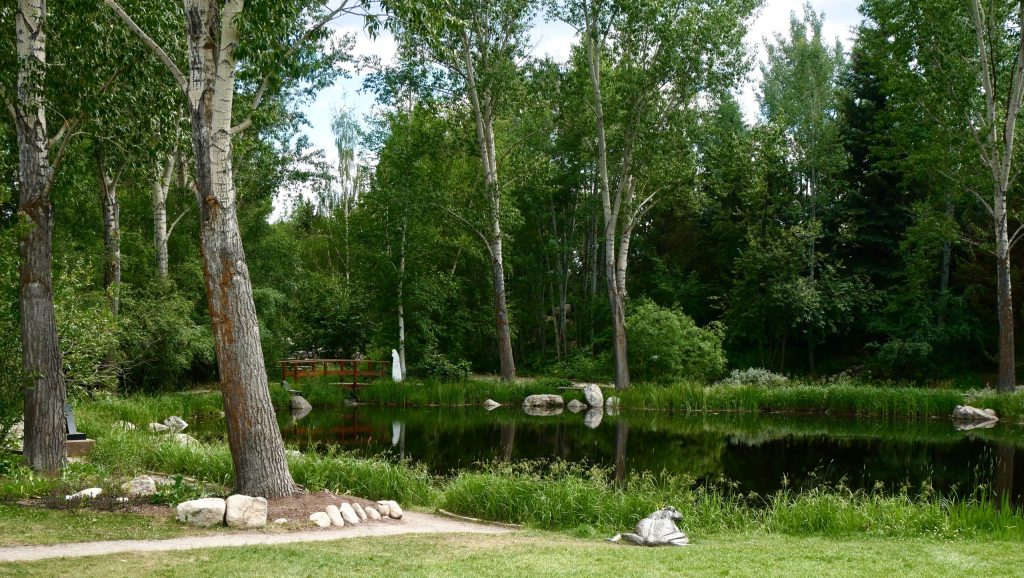
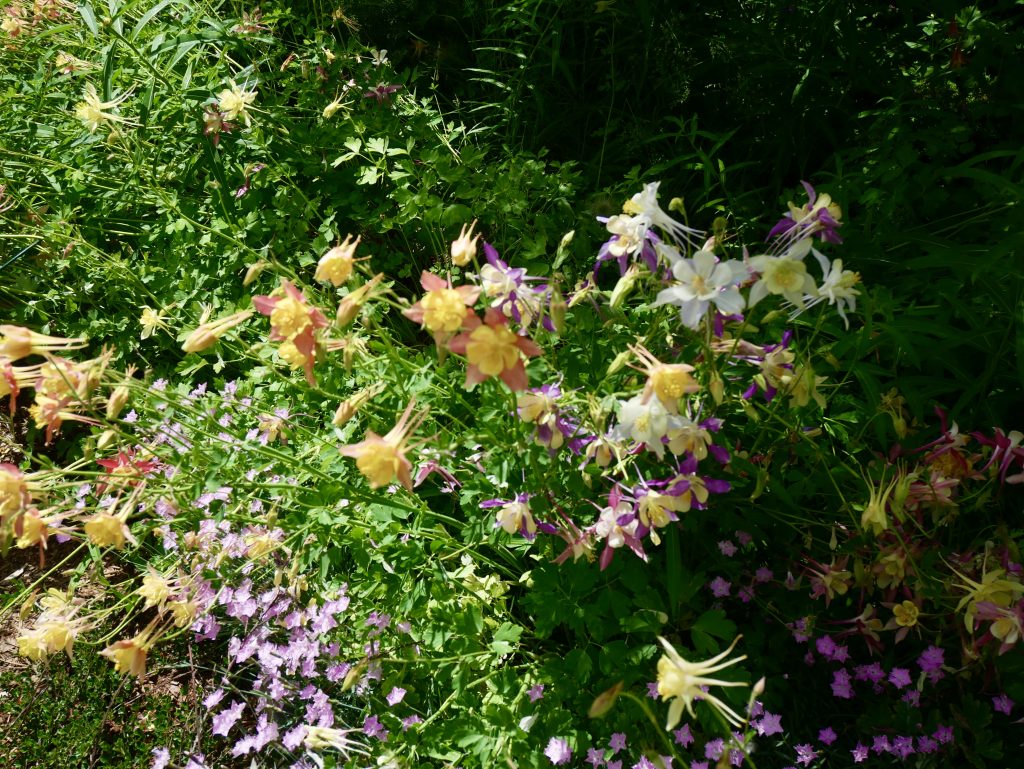
“We try to renovate at least two or three gardens a year,” MacNeil said. “Plants get seedy so they need the soil to be rejuvenated and refreshed.”
Despite its small footprint, the park hosts a variety of created microclimates ranging from dry rock gardens to moisture-rich areas that sustain perennials. According to MacNeil, this reflects the ecology of the region. Interpretive signs and plant labels also offer opportunities for education and inspiration as visitors walk the park’s many trails, some of which lead to benches that invite deeper meditation and reflection.
MacNeil noted that visitors often use the gardens, and the plants within them, as inspiration for their own homes and properties.
“People like to come and see something so they can work it into their own landscapes,” MacNeil said.
A place to gather, grow and heal
Beyond flowers and foliage, the Yampa River Botanic Park has become a place of emotional grounding. It hosts more than a dozen free events throughout the summer, from Strings Music Festival’s “Music on the Green” performances to guided meditation, qigong and yoga sessions.
“All of the programs and events are free,” MacNeil said. “There are no financial barriers.”
For those seeking quiet personal time, the park also offers a serenity walk. The bilingual mindfulness brochure, supported by grant funding, is designed to help visitors reflect on themes like forgiveness and awareness.
“Part of our mission is around serenity,” MacNeil said. “They get that without even knowing that that’s an important part of our mission.”
Though weddings are permitted for a fee, the park keeps its rental costs low to honor Audrey Enever’s hope that locals could always afford to be married there.
“We’ve kept our rates low to honor her wish,” MacNeil said. “It’s one of the most affordable wedding venues in Steamboat.”
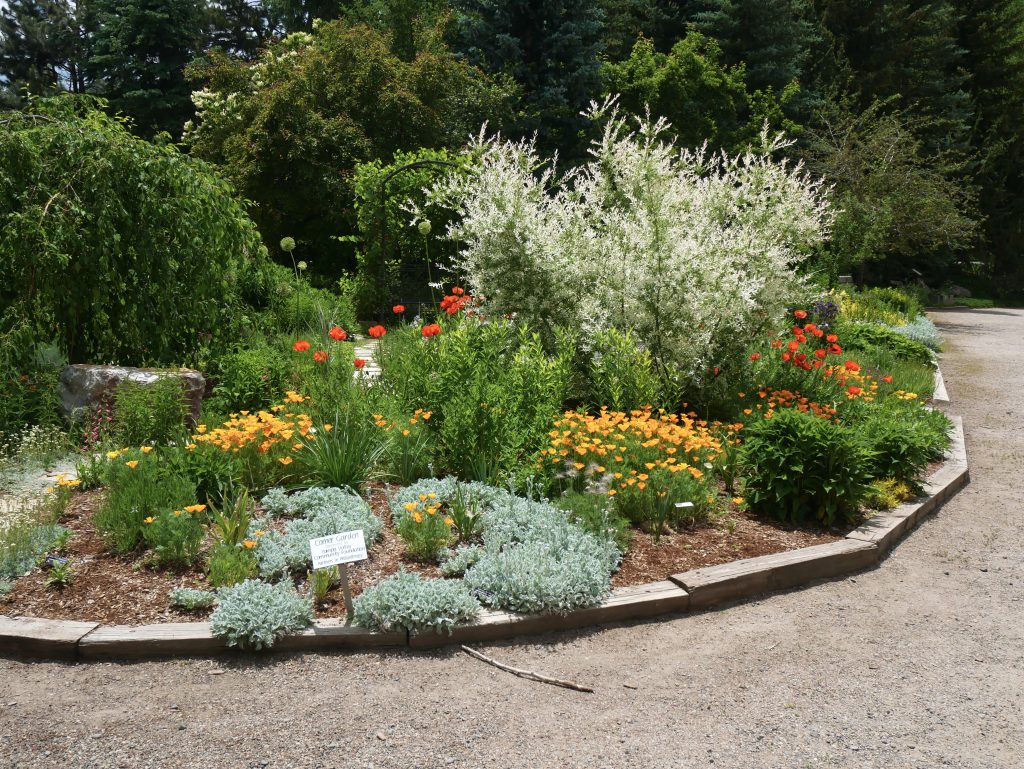
The park’s carefully cultivated environment doesn’t attract only people — it serves as a habitat for local wildlife as well. Hummingbirds, butterflies and pollinators are attracted to the nectar-rich native plants. Other birds nest in the canopies and shrubs within the park. Most famously, a pair of ospreys have returned to the same nest for 10 years, raising chicks just above the Yampa River’s edge.
“They migrate to Central and South America in the winter and come back at the end of March,” MacNeil said. “They’re very popular for our guests to watch.”
To preserve the integrity of the plant collection, a perimeter fence keeps large animals like elk and deer out while still welcoming smaller wildlife, all of which become part of the park’s balance between flora and fauna.
“The reason the Botanic Park is called a botanic park and not a botanical garden is because the founders wanted to include wildlife, especially birds,” MacNeil said. “They didn’t want to exclude it by calling it just a garden.”
Native plants that once covered the Yampa Valley such as penstemon, Indian paintbrush and the namesake Yampa root, are preserved to provide habitat and seasonal nourishment for local birds and animals.
Hidden in plain sight
Despite its popularity among some residents, the park remains unknown to many in the Yampa Valley. MacNeil says one of her greatest challenges is raising awareness, especially across different demographics and communities.
“I’m always surprised when I talk to people that say they’ve never been here,” she said. “When they finally do come here they’re like, ‘Wow, look at this place’.”
MacNeil says she doesn’t necessarily want the park to become crowded, especially since serenity is central to its identity, but she does hope that people know it’s there for them when they need it for mind, body and connection.
“I just like for people to know that it’s here and that it is a place of enjoyment,” she said. “When I hear the joyful statements from the people that have never come here, that brings me joy.”
And for MacNeil, the garden isn’t just a workplace, it’s a lifelong calling and realization of a dream.
“I love it,” she said. “This is what I wanted to do with my life. I wake up every day thrilled to come to work.”
For more information on the Yampa River Botanic Park, visit YampaRiverBotanicPark.org.
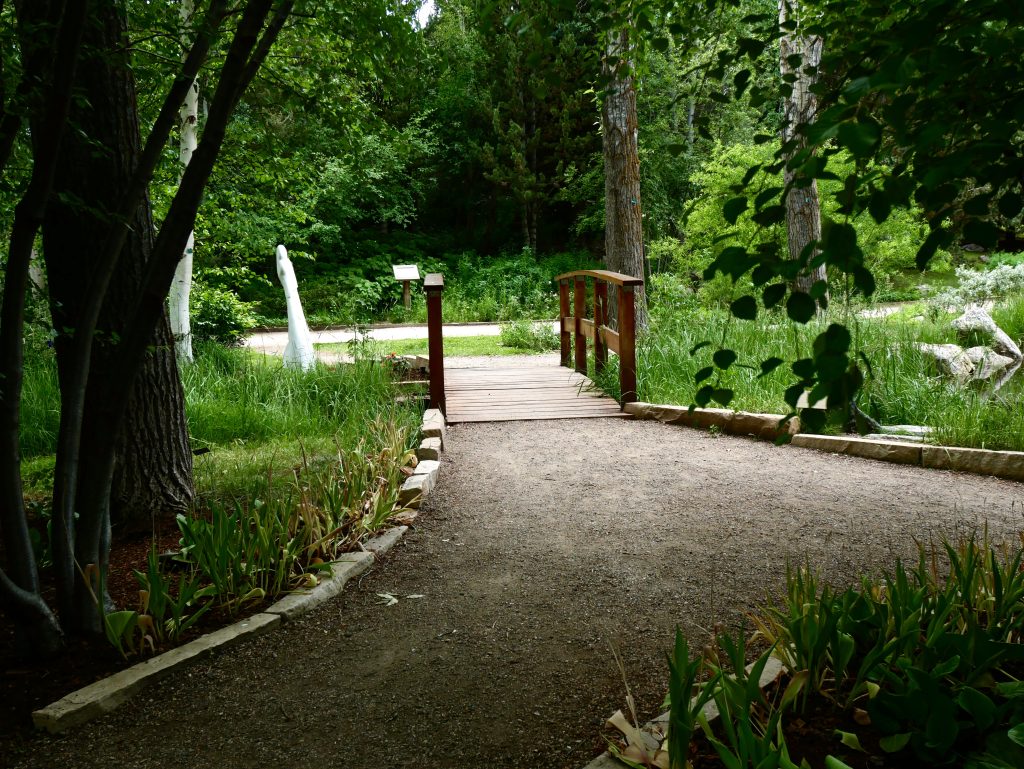


Support Local Journalism

Support Local Journalism
Readers around Steamboat and Routt County make the Steamboat Pilot & Today’s work possible. Your financial contribution supports our efforts to deliver quality, locally relevant journalism.
Now more than ever, your support is critical to help us keep our community informed about the evolving coronavirus pandemic and the impact it is having locally. Every contribution, however large or small, will make a difference.
Each donation will be used exclusively for the development and creation of increased news coverage.


